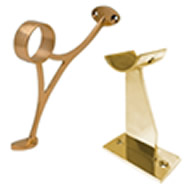Third-Party Delivery Service can make things more convenient for you, reduce some liability, and help increase your bottom line, but at the potential expense of customer relations and value.
Whether it’s Grub Hub, Postmates, or Uber Eats, people all over are whipping out their phones to hit up third-party delivery services when hunger strikes. These apps offer customers a convenient way to browse multiple menus in a single place, speedy arrival, and access to restaurants that may not have on-staff drivers. Many eateries are seeing the benefits of pairing up with these third-party services, but does that make it a good idea for your pizzeria? If you’re considering adding your menu to the roster, consider these pros and cons first.
Pro:
They can help handle increased demand. It’s not easy for a restaurant to keep extra people on hand just to deliver pizza during peak times. Any number of things can increase the demand on a pizzeria: Inclement weather keeps customers from driving out to pick up dinner, staff call out sick, and the high demands placed on delivery vehicles makes car trouble a frequent occurrence. Partnering with a third-party app means not having to worry about retaining extra people, or covering when someone’s out sick—the app handles all of that for you.
Con:
Third-party services may not offer customers much value. One of the really great things about pizza is that it’s inexpensive. It also travels well, so it’s easy to deliver across a fairly large area. This means that a family can get dinner fairly cheaply, quickly, and conveniently, which has allowed many pizzerias to build their businesses almost completely around a delivery model. Third-party services tack on surcharges and raise their rates during peak hours, which can make an inexpensive pizza pretty pricey. For this reason, many customers may avoid using apps to get pizza that they can already have delivered much more cheaply.
Pro:
They can take some of the heat off of you. There’s a lot of potential liability involved in running a restaurant. With drivers coming and going all of the time, the odds of an accident are pretty high. Unfortunately, these can impact a restaurant’s insurance premiums—or even cause an insurer to drop coverage completely. Restaurant owners generally aren’t responsible for accidents that third-party drivers get in to, so, if you use a third-party service, a fender bender here and there won’t end up raising your rates. Talk to your insurer and attorney before making the switch, however, as situations vary.
Con:
Third-party apps can create the wrong impression. You know your menu inside and out, and can minimize mistakes. You also know how your staff look, so you can correct them if they come into work looking sloppy. You might even have uniforms, car toppers, and other gear to help your brand. Third-party apps don’t have any of these advantages. The restaurants partnered with them have no control over things like mistakes, the drivers’ appearances, how long food takes to arrive, or even whether the food is cold by the time it gets there. Using a third-party app provides a lot of convenience, but it comes at the cost of control.
Pro:
Apps can expand your customer base. If you only have one or two drivers, the area you can deliver to can be pretty limited. Third-party apps can give you access to a much wider customer base by expanding who you’re able to reach. As a result, you can increase your bottom line by getting your food on the tables of people you may have never considered potential customers otherwise.
Con:
Third-party drivers don’t know your schedule. Restaurants have busy times every day, and they may not always match up to the peak times given by the apps themselves. When a customer inputs an order through a third-party app, the restaurant can only either accept it or deny it. If you’re too busy to send out an order, there’s no way to explain yourself. This can create a negative impression as the app pushes customers toward a competitor’s restaurant.
Using a third-party service to deliver your food is a big decision, and not one to undertake lightly. It can make things more convenient for you, reduce some liability, and help increase your bottom line, but at the potential expense of customer relations and value. Weigh out the potential benefits to your business, and make the choice that’s best for your specific situation.
TAGS: restaurants, pizzeria, pizza




















